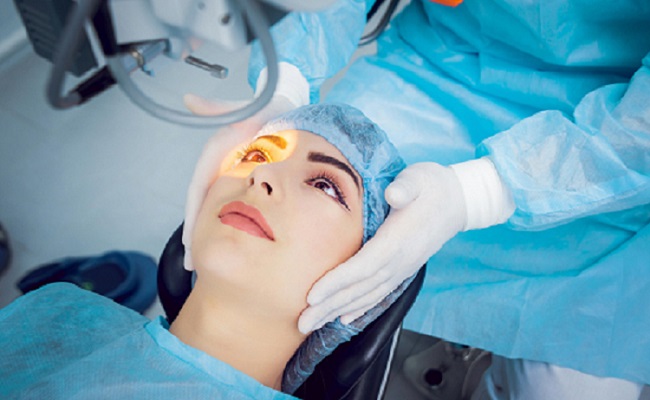Catract surgery

Cataract is caused by the clouding of the natural lens of the eye and usually develops as a result of old age, but may occur in infants and young children too. This results in blurred vision, glare, and sensitivity to bright lights. As the disease progresses, it leads to painless, progressive decrease in vision which can also result in a poor quality of life, interfering with day-to-day activities like driving and reading.
A healthy lifestyle helps prevent cataract, but in case if it happens, it is managed by spectacles. However, as the disease progresses, or if the central vision deteriorates, the only option for its management is a surgery. Cataract surgery in Delhi entails sucking out the natural lens after emulsifying it inside the eye by a process known as phacoemulsification. After this, a customized, artificial intraocular lens (called IOL) is placed in its position which restores natural and normal vision.
Who Is At a Risk of Cataract?
- People whose age is more than 60 years
- People with prolonged use of steroids
- Overexposure to ultraviolet rays
- People with Diabetes
- Eye injuries
How Do I Know if I Need a Cataract Surgery?
This is where cataract surgeons at Eye7 come into the picture. After a thorough and comprehensive eye evaluation, our doctors will discuss with you the diagnosis of cataract and your best corrected visual acuity (your vision with glasses). They will also help you judge for yourself, with trial lenses, if you are comfortable with this vision with glasses in your day to day life or not.In case, if you are not comfortable, in the absence of any eye disease that may affect your vision, the surgeon will discuss with you the possibility of cataract surgery in Delhi, and its available techniques.
Cataract Treatment in Delhi
There is no medication for treating cataract, but surgery has long proven to be an effective treatment for the disorder. With the advancement in technology, it is now safer, to get a surgery, than ever to get your vision corrected with minimal risks involved.The decision to have surgery depends on the degree to which your vision is impaired. Although some persons with cataracts find that their vision improves by using eyeglasses, magnifying lenses or stronger lighting. However, the only real way to cure cataracts is by surgery. If cataracts affect both eyes, each eye operation is scheduled and performed separately.The common surgical procedures are:
Extracapsular Cataract Extraction
In this procedure, the lens is either broken up using ultrasound waves (a process called phacoemulsification, or phaco) then extracted through a tiny hollow tube, or it is removed in one piece. The normal lens capsule surrounding the lens is left intact.
Intracapsular Cataract Extraction
In this technique, both the lens and the lens capsule are removed. This technique is now performed only in very rare cases.Once the lens is removed, it may be replaced by one of the three options:
- An intraocular lens (an artificial lens placed in the eye during cataract surgery);
- A contact lens; or
- Special cataract glasses with very powerful magnification.
Latest Surgical Techniques for Cataract Management Used at Vivek Netralaya
Eye7 has always been a pioneer when it comes to the use of latest technology and techniques for surgeries. Below are the ones that can be used for the treatment of cataract in Delhi:
Microincision or Regular Phaco Cataract Surgery
In conventional phacoemulsification and Microincision cataract surgery, a capsulotomy is performed manually using forceps or a bent needle. It is through this opening that the ultrasound emulsifies the natural lens of the eye before it is sucked out of the eye using a vacuum. When performed manually, this capsulotomy is not perfectly circular, and in some cases, the capsulotomy may “run” to one side, resulting in a tear of the capsular bag. This means that the IOL implanted may not as stable as it should be.
Robotic or Femtosecond Cataract Surgery
To circumvent the errors of microincision surgery, Femtosecond Laser cataract surgery was developed that uses a laser beam to create the capsulotomy, eliminating the chances of human error and possible complications. This technique automates the capsulotomy process, but, it also adds a considerable cost and time to the duration of surgery. The advantages of this include Excellent visual outcome, 100 % Blade free, painless and stitch-less surgery, precise self-sealing corneal incisions.